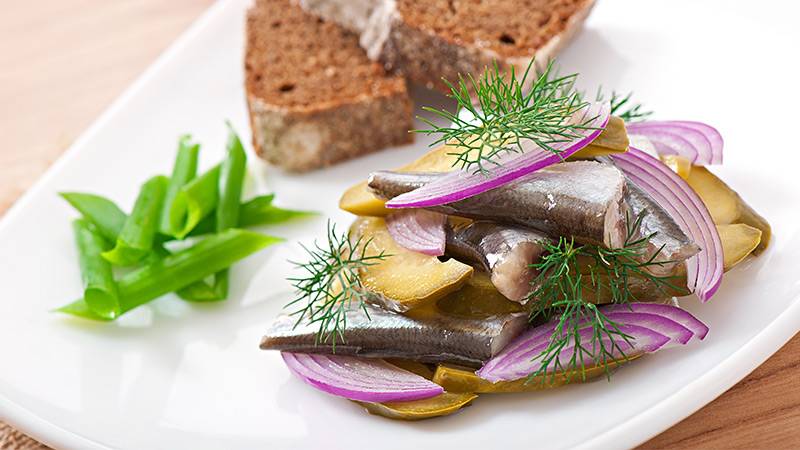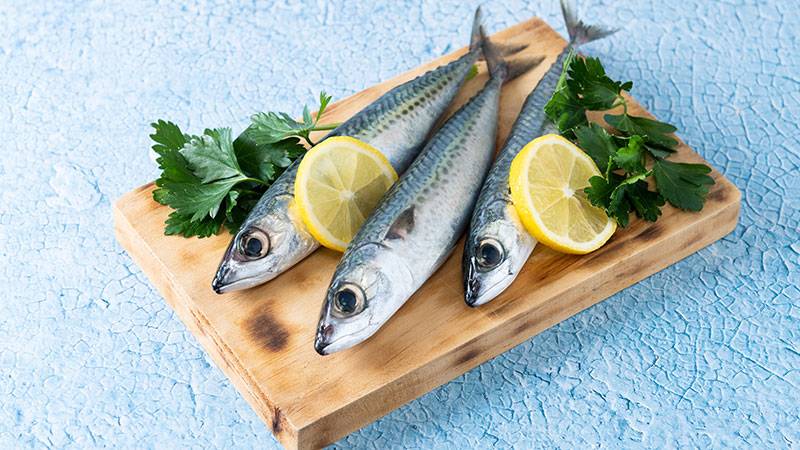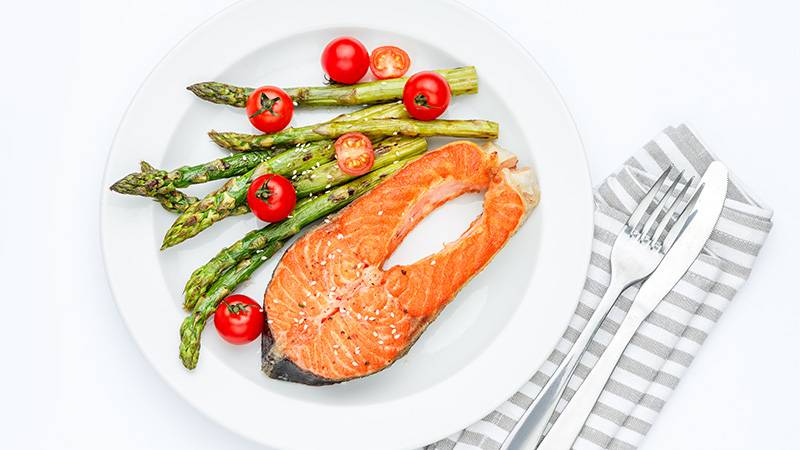I stumbled upon the New Nordic Diet while searching for a sustainable way to sate my foodie cravings without the environmental guilt. This innovative approach to eating isn’t just a diet—it’s a philosophy that intertwines pleasure, health, and the planet.
Originating from the cold coasts of Scandinavia, it emphasizes seasonal produce, whole grains, and ethically sourced meats, mirroring the ancient Viking’s sustenance yet tailored for our modern lives.
As we grapple with climate change, sustainable eating has shifted from a trend to a necessity, making the New Nordic Diet a beacon for eco-conscious food enthusiasts worldwide.
What is the New Nordic Diet?

The New Nordic Diet is a contemporary food concept that was developed in 2004 by a group of chefs and nutritionists as a response to growing health and obesity concerns and unsustainable farming practices in the Nordic countries.
It was inspired by the traditional ways of eating in Denmark, Finland, Iceland, Norway, and Sweden, which focus on the availability of seasonal, local, and sustainable food sources.
At its heart, the New Nordic Diet is about more than just individual health; it’s a commitment to the environment and regional economies. It champions foods that are foraged, farmed, or fished from the Nordic region, aiming to reduce food miles and support local producers.
The core principles of this sustainable diet revolve around a high intake of whole grains, such as rye, barley, and oats; local fruits and berries; root vegetables; legumes; and lean meats, particularly fish. It also emphasizes organic produce whenever possible.
The goals of the New Nordic Diet are multifaceted: to improve public health, to enhance the sustainability of food systems, and to create a distinct food culture with a clear identity that can be shared globally. It’s a diet that looks to the past to shape a healthier, more sustainable future.

Read More:
The Environmental Benefits of the New Nordic Diet

The New Nordic Diet offers a “green advantage” by providing a blueprint for eating that aligns closely with environmental stewardship. This diet’s environmental benefits are manifold, and they are rooted in its fundamental principles of local sourcing and seasonal eating.
Local sourcing is a cornerstone of the New Nordic Diet, reducing the need for long-haul transportation, which is a major contributor to greenhouse gas emissions.
By consuming foods that are grown or produced within the local vicinity, the diet minimizes food miles. For instance, a study from the University of Copenhagen found that following the New Nordic Diet could reduce the associated food system’s climate impact by up to 20%.
Seasonal eating further enhances this diet’s environmental benefits. It ensures that foods are consumed at their peak natural production cycle, which means they require less artificial energy for growth and storage, reducing the overall carbon footprint.
Seasonal produce can reduce the energy used for heating in greenhouses, storage, and transportation by up to 10 times compared to out-of-season produce.
The New Nordic Diet also emphasizes organic farming, which has been shown to use 30-50% less energy per unit of yield when compared to conventional farming.
Organic practices enhance biodiversity, improve soil quality, and reduce pollution from fertilizer and pesticide runoff. By advocating for organic produce, the diet supports farming methods that are more in tune with ecological processes.
Moreover, the diet’s preference for wild-caught fish and game over farmed meats can lead to a significant reduction in environmental impact. Aquatic and terrestrial ecosystems are less burdened by wild harvesting compared to the environmental costs of livestock farming, which includes methane emissions, overgrazing, and land degradation.
In essence, the New Nordic Diet’s green advantage is clear. It not only encourages a healthier balance of foods but also promotes an agricultural and consumption model that is more sustainable.
This synergy between diet and environment is pivotal in the global effort to mitigate climate change and preserve our planet for future generations.
Health Benefits of the New Nordic Diet

The New Nordic Diet is not only a boon for the planet but also a powerhouse of nutrition, offering numerous health benefits substantiated by research. A study published in the Journal of Internal Medicine found that individuals adhering to the New Nordic Diet had lower levels of harmful LDL cholesterol and higher levels of beneficial HDL cholesterol compared to those following an average Western diet.
This is largely due to the diet’s high intake of omega-3 fatty acids from fish and flaxseeds, as well as fiber from whole grains and legumes.
In terms of weight management, the New Nordic Diet has been shown to be effective. Research from the University of Copenhagen indicates that people following this diet had a significant reduction in body weight, compared to those on a standard diet, attributed to the high content of protein and fiber, both of which are known to increase satiety.
Comparatively, the New Nordic Diet stands out against other popular diets like the Mediterranean diet, which is also praised for its health benefits.
While both emphasize whole foods and lean proteins, the New Nordic Diet is more stringent about organic and locally sourced produce, potentially leading to a lower intake of pesticides and a fresher, more nutrient-rich food selection.
Long-term health impacts are promising as well. A long-term study suggests that adherence to the New Nordic Diet can lower the risk of cardiovascular disease and type 2 diabetes.
It also has potential anti-inflammatory effects linked to the high intake of antioxidants from berries and vegetables, which can play a role in reducing the risk of chronic diseases.
The New Nordic Diet’s emphasis on a high intake of plant-based foods, moderate amounts of fish, and minimal processed foods creates a nutritional profile that is not only conducive to individual health but also supports the broader vision of a sustainable and healthy planet.
Downsides of a New Nordic Diet
While the New Nordic Diet has many benefits, it’s not without its downsides. One significant challenge is accessibility. The emphasis on local and organic foods can make this diet more expensive, potentially putting it out of reach for those on a tight budget.
Seasonality can also limit variety, especially in the long winter months of the Nordic countries, which could lead to a monotonous diet that might discourage adherence.
Additionally, the diet’s focus on regional foods may not be as easily adaptable for those living outside of the Nordic regions due to differences in climate and available produce, thus potentially increasing the carbon footprint if foods are imported to adhere strictly to the diet’s guidelines.
The diet also leans heavily on fish and seafood as protein sources, which could pose a problem if sustainable fishing practices are not followed, potentially leading to overfishing and disruption of marine ecosystems.
Moreover, for individuals with dietary restrictions or certain health conditions, such as those requiring lower fat intakes or those with allergies to seafood, the New Nordic Diet may require careful modification.
Lastly, the New Nordic Diet is relatively new, and while short-term studies are promising, long-term research on its broader health impacts is still developing. As with any dietary change, it’s important to consider personal health needs and consult with a healthcare provider.
Foods to Eat on the New Nordic Diet

The New Nordic Diet is a smorgasbord of nutrient-rich, sustainable foods that are as good for you as they are for the planet. Here’s what typically graces the plate:
- Whole Grains: Rye, barley, and oats are staples, providing essential B-vitamins and fiber, which aid in digestion and can help maintain a healthy weight.
- Root Vegetables: Carrots, beets, and potatoes are rich in vitamins, minerals, and antioxidants. They’re versatile and grounding, offering comfort in every bite.
- Leafy Greens: Kale, spinach, and Swiss chard are loaded with iron and calcium. These greens are key to building strong bones and supporting blood health.
- Berries: Blueberries, lingonberries, and cloudberries are high in antioxidants and vitamin C, perfect for immune support and combating inflammation.
- Fatty Fish: Salmon, mackerel, and herring are omega-3 powerhouses, crucial for heart health and cognitive function.
- Legumes: Peas and beans are excellent protein sources and are rich in fiber and iron, supporting muscle health and energy levels.
- Nuts and Seeds: Almonds, flaxseeds, and sunflower seeds offer healthy fats and are satiating snacks that support cholesterol levels.
- Dairy Products: Skyr and cheese from grass-fed cows provide calcium and probiotics, which are beneficial for bone health and digestive wellness.
- Herbs and Spices: Dill, horseradish, and juniper berries are not just flavor enhancers but also contain compounds with anti-inflammatory properties.
- Game Meat: Venison and other game are lean proteins, lower in fat than domesticated meats, and rich in iron.
Each food group within the New Nordic Diet brings a unique set of nutrients to the table, promoting a balanced diet that is in harmony with nature’s cycles.
Foods to Minimize on the New Nordic Diet

Adopting the New Nordic Diet also involves mindful reduction of certain foods. Moderation is key in achieving the diet’s health and environmental goals:
- Red and Processed Meats: While not entirely excluded, consumption of meats like beef and pork is limited due to their higher environmental impact and association with heart disease when consumed in excess.
- Sugar-Sweetened Beverages: These are minimized to reduce sugar intake, which can lead to weight gain and dental issues.
- Refined Grains and Baked Goods: White bread and pastries made from refined grains are limited. They offer less nutritional value and are often high in sugars and fats.
- High-Fat Dairy Products: Items like cream and butter are used sparingly. They can be high in saturated fats, which may affect cardiovascular health.
- Alcohol: If consumed, it should be in moderation. Excessive consumption can lead to a range of health issues, including liver disease and increased risk of certain cancers.
- Fast Food and Processed Snacks: These are often high in calories, fats, and salt while being low in nutritional value, and their production is typically resource-intensive.

Read More:
Tips for Trying the New Nordic Diet
Embarking on the New Nordic Diet journey can be both exciting and sustainable. Here are some practical tips to seamlessly integrate this wholesome diet into your daily routine:
Start with Seasonal Produce
Familiarize yourself with the seasonal produce in your region. Building your meals around these items ensures freshness and supports local agriculture.
Choose Organic and Local
Whenever possible, opt for organic foods to reduce your exposure to pesticides and support farming practices that are better for the environment.

Whole Grains are Your Friends
Replace refined grains with whole grain options such as rye bread, barley, and oats. These are not only healthier but also more satisfying.
Plan Your Meals
Meal planning is crucial. It helps in making intentional food choices, reducing food waste, and avoiding the temptation of less healthy options.
Mindful Meat Consumption
If you eat meat, choose lean and high-quality options, and consider it as a side rather than the main component of your meals.
Foraging and Farming
If accessible, foraging for wild herbs, berries, and mushrooms can be a delightful way to connect with nature and gather fresh ingredients.
Experiment with New Recipes
The New Nordic Diet is rich in flavors. Experimenting with new recipes can make the transition exciting and more palatable.
Incorporate Seafood Twice a Week
Aim to include fatty fish like salmon or mackerel in your diet at least twice a week to reap the benefits of omega-3 fatty acids.

Moderation is Key
Remember, the diet is about balance and moderation. Don’t be too hard on yourself if you indulge occasionally.
Educate Yourself
Understanding the environmental and health impacts of your food choices can be a powerful motivator for sticking to the New Nordic Diet.
New Nordic Diet Meal Plan for 1 Week
Embarking on the New Nordic Diet can be a delightful culinary adventure. Here’s a 7-day meal plan to get you started:
Day 1
Lunch: Open-faced rye bread sandwich with smoked mackerel and fresh dill.
Dinner: Roasted root vegetables with a side of barley risotto.
Snacks: Carrot sticks with a wild herb dip.
Day 2
Lunch: Warm lentil salad with beets and goat cheese.
Dinner: Baked cod with steamed green beans and almond slivers.
Snacks: Apple slices with a touch of cinnamon.
Day 3
Lunch: Nordic pea soup with chunks of whole grain bread.
Dinner: Venison meatballs with lingonberry sauce and mashed swede.
Snacks: Handful of mixed berries.
Day 4
Lunch: Quinoa salad with smoked salmon and cucumber.
Dinner: Grilled chicken with roasted Brussels sprouts and hazelnuts.
Snacks: Sliced bell peppers with hummus.
Day 5
Lunch: Nordic cabbage and apple salad.
Dinner: Pan-fried herring with a potato and dill salad.
Snacks: A pear or a handful of dried fruit.
Day 6
Lunch: Smørrebrød with herring, beetroot, and cottage cheese.
Dinner: Herb-roasted chicken with root vegetable gratin.
Snacks: Cucumber slices with a sprinkle of sea salt.
Day 7
Lunch: Baked trout with steamed asparagus and wild rice.
Dinner: Slow-cooked lamb with rosemary and a side of kale salad.
Snacks: A handful of nuts or some crispbread with cheese.
This meal plan is designed to be flexible, so feel free to swap out ingredients based on availability and personal preference. The key is to focus on whole, unprocessed foods that are native to the Nordic region or your local area, ensuring each meal is balanced and sustainable.
Enjoy the fresh, clean flavors of the New Nordic Diet and the peace of mind that comes with eating in harmony with the environment.
Conclusion
The New Nordic Diet stands out as a beacon of sustainability and health. It’s a testament to how our plates can reflect a commitment to environmental stewardship and personal well-being. By embracing local, seasonal, and organic foods, this diet can help reduce our carbon footprint, support local economies, and nourish our bodies with nutrient-rich foods.
I encourage you to embark on this culinary journey, explore the vibrant flavors of the North, and discover the profound impact of mindful eating. Share your New Nordic experiences and become part of a community that values the health of our planet as much as personal health.

